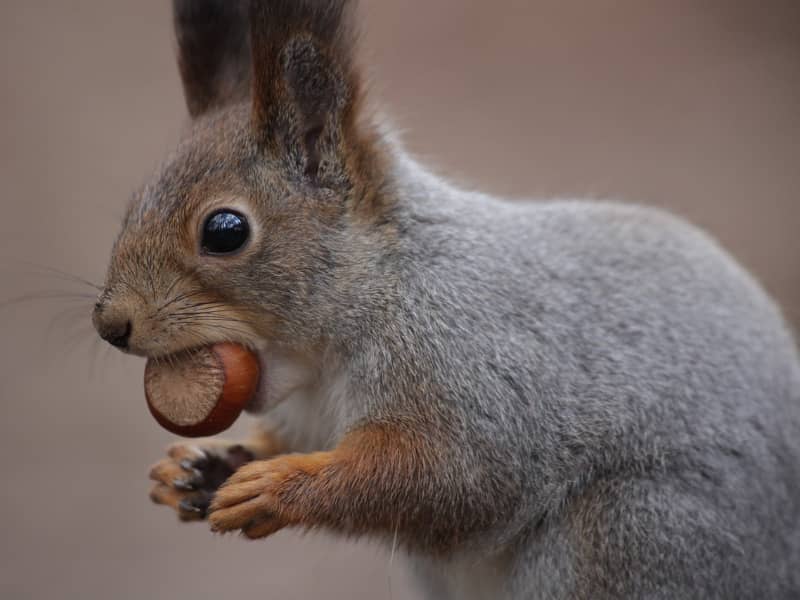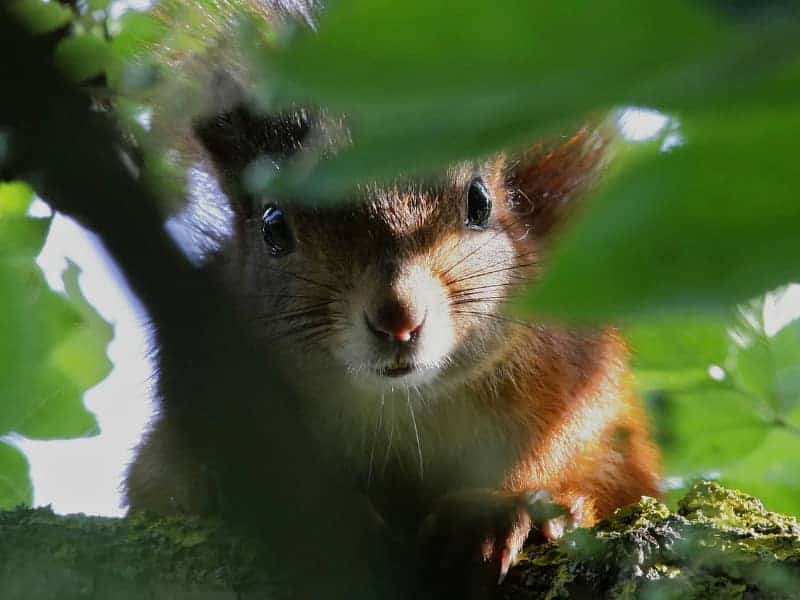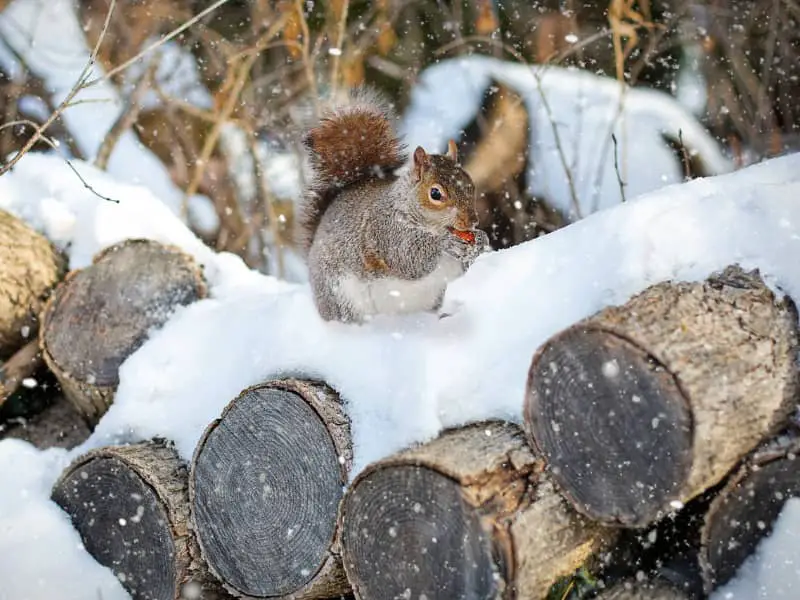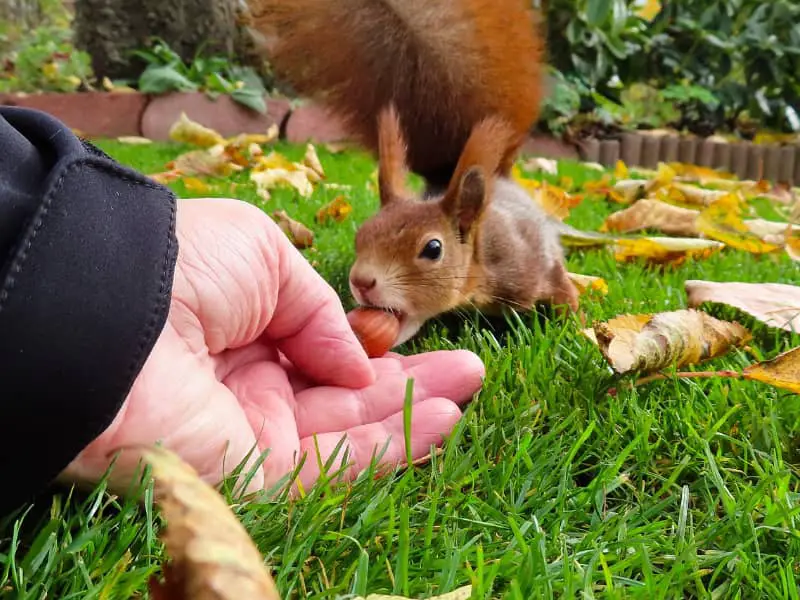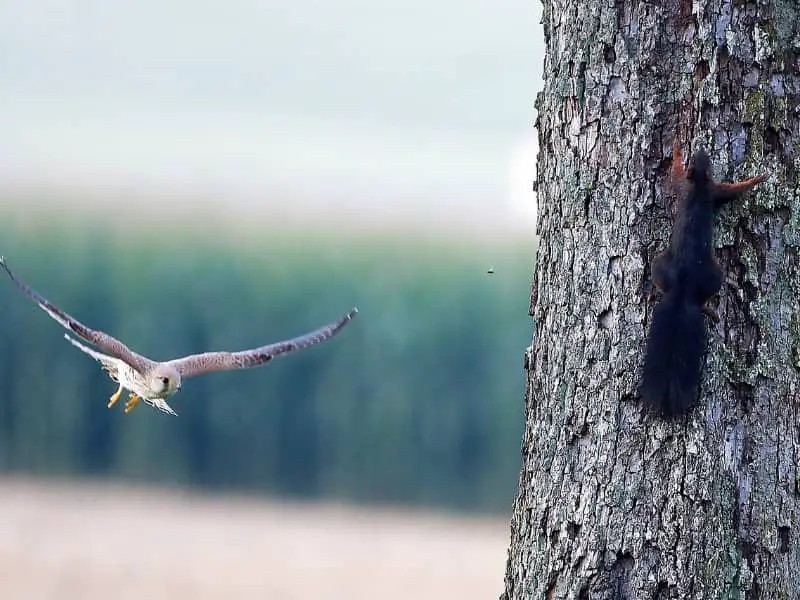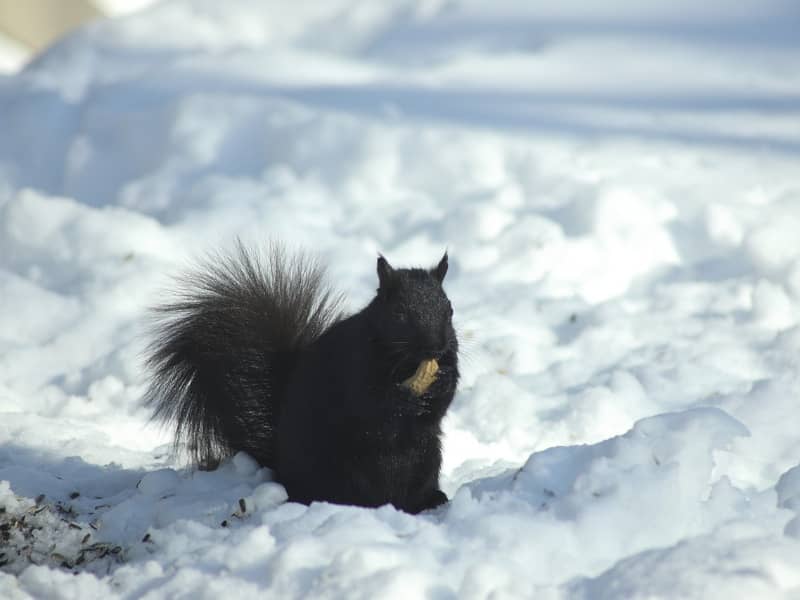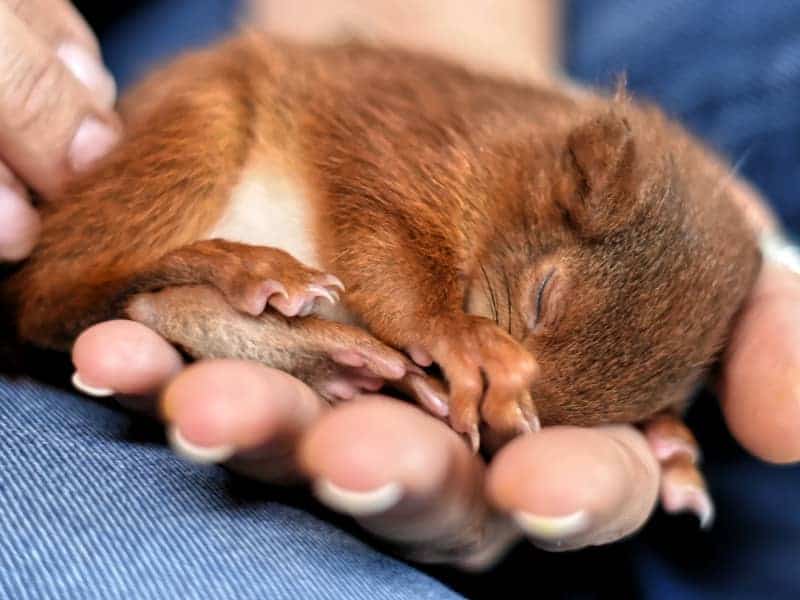
Squirrel babies
Squirrel babies are neither fluffy nor cute looking after birth. It is only after a few weeks that the baby becomes a lovely ball of fur that soon begins to climb around cheerfully. We would like to show you which developmental stages the squirrel babies go through.
When are squirrel babies born?
Squirrel babies are usually born in spring and summer. This means that twice a year squirrels see the light of day. In the spring it is the months of March and April, while in the summer it is the period between May and August. The gestation period of squirrels is about 40 days.
The mother gives birth to her babies in the nest. This nest is also known as a kobel, which consists of brushwood and twigs. The hollow sphere has a size of about 50 cm and is usually located between 5 and 15 m above the ground in a tree.
Birth of squirrel babies
Between three and eight young are born in a litter. Immediately after birth, the mother examines the little ones and cleans them. At birth, the little rodents weigh between 8 and 15 grams on average. That is about as much as a standard eraser.
The little ones are not only born blind, but also naked. At the same time they have conspicuously long hands and fingers. Both the front and hind legs are connected with a skin. In the course of the next days and weeks, however, this disappears.
How the squirrel babies develop
In the first few weeks, the babies are watched over by their mother. She keeps a close eye on their development.
After about 6 days, the babies grow the first hairs on their heads. These spread over the back. After about 2 weeks, a dense and fluffy fur develops from it. After three weeks, the small rodents weigh between 30 and 50 grams.
After 22 days, the lower incisors begin to erupt. And after 30 days, the little ones open their eyes for the first time. From the sixth week of life, the ear canals are free. Ten days later, the upper incisors erupt. They are weaned from their mother's milk and are given more and more solid food. This completes the basic development of squirrel babies. The animals now weigh about 100 grams.
The mother animal protects her young
While the young are still dependent, the mother is incessantly busy with various protective measures. She drives away conspecifics that approach the tree where the goblet is located. If the mother thinks that the location is permanently disturbed, she begins to transport the young individually to another nest.
At the age of about 8 weeks you small already look like ready squirrels, but are much smaller than their parents. They can then already crack the first sunflower seeds. If the young animals are then independent they remain still some weeks in the proximity of the mother animal. They use this time to play and to look for food. At about 3 months of age, the animals weigh between 200 and 300 grams. They have reached about 75 % of their later size.
Only then the little squirrels begin to look for their own territory and build a goblet. Usually this new nest is located near their birthplace. In the following spring, the little ones can already give birth to the first babies themselves.
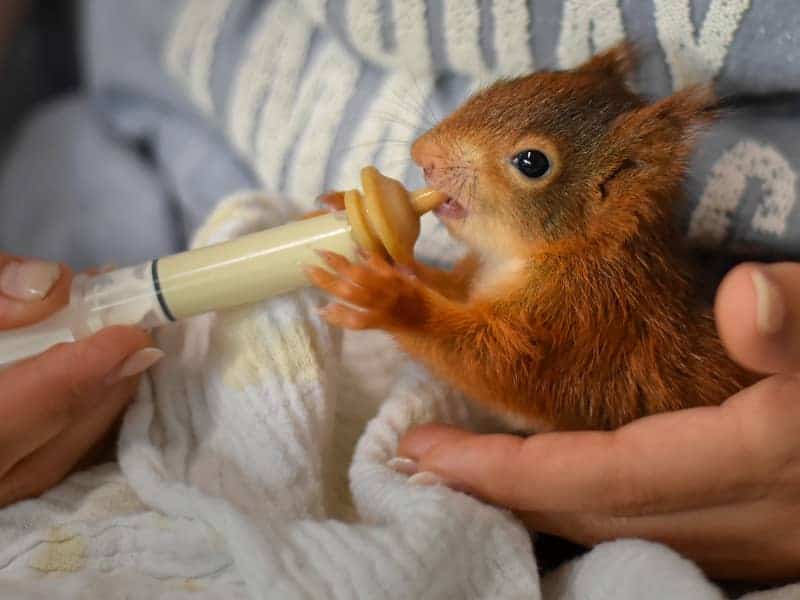
How to raise a squirrel baby
Again and again it happens that the little ones fall out of the nest. Either they have moved too much or they were simply blown out of the nest by the wind. If you find such a squirrel baby you have to help him.
Very important in the rearing is warmth. You can first warm the little animal with your hands. At home you put it on a towel with a hot water bottle underneath. Make sure that the hot water bottle is not too hot.
Right at the beginning, the baby is not yet fed. Much more important here is first of all liquid. Give the baby a little lukewarm water with a pinch of salt and a teaspoon of glucose. Fill the mixture into a syringe. This way you can feed the baby well.
For the next few weeks you need to prepare a nest for the rodent. For this purpose, you take a shoe box, which you pad softly. In the first weeks, the little ones need a lot of closeness and security. It is best to carry the rodent in a bag close to your body during the day. Always make sure that it gets enough air.
For the rearing of the animal you need a lot of patience. The little one is very afraid at the beginning, because everything is strange to him. It must first get used to you.
Special milk for breeding
In the pharmacy or at the vet you can get special rearing milk. Have the animal examined by a veterinarian. You can now feed the squirrel regularly with the milk. Put the squirrel with its belly on your hand and give it the milk. Make sure that the animal does not swallow. After feeding, the animals like a belly massage. On the one hand, this promotes digestion and on the other hand, it helps them to fall asleep.
At about 5 weeks you can wean the squirrel off milk. You can offer him solid food like sunflower seeds and fruit.
At the age of 3 - 4 weeks, the little ones become active. They then need a playground. For this purpose, you can put branches in the box.
After 6 weeks, the squirrel is released into the wild. At the latest with 8 weeks the process should be completed. If you have a garden, you can build an outdoor enclosure for the rodent. So the animal can slowly prepare for the release.
At the latest after 4 months you should release the animal into the wild. It happens that the rodent returns to your home in the evening. But soon he will move into the big wide world and start his own family.
Author

-
Garden animal - A life with nature
Welcome to my animal blog! My name is Dirk and I am happy to take you on my journey through the fascinating world of animals and gardening.
Born 54 years ago, I have had an insatiable curiosity for the animal world around me since childhood. Although I have moved professionally in other industries, my true passion has always been animals and nature. It is remarkable how a small garden has become such an important part of my life.
Many of my fondest memories are associated with the animals that share our home. Whether it's the curious squirrels that scurry across the trees in the morning, the colorful variety of birds that visit our feeders, or the busy bees and butterflies that pollinate our flowers, every moment with them is invaluable to me.
This blog is my contribution to share my experiences, discoveries and insights with like-minded people. Here I will share stories of unforgettable encounters with animals, give tips on gardening and creating wildlife-friendly habitats, and take you on my journeys through nature.
Thank you so much for being here!
Cordial,
Dirk aka garden animal
Last posts
- 27. February 2024PetsVeganes Hundefutter – Grün und Gesund?
- 18. January 2024ChickensOregano für Hühner
- November 27, 2023HamsterDiurnal hamsters
- November 24, 2023HamsterHamster hammock

